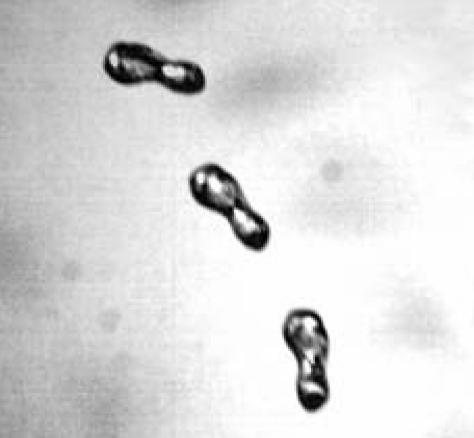
Splash-form tektites are generally acknowledged to have the form of bodies of revolution. However, no detailed fluid dynamical investigation of their form and stability has yet been undertaken. Here, we review the dynamics and stability of spinning, translating fluid drops with a view to making inferences concerning the dynamic history of tektites. We conclude that, unless the differential speed between the molten tektite and ambient is substantially less than the terminal velocity, molten tektites can exist as equilibrium bodies of revolution only up to sizes of 3 mm. Larger tektites are necessarily non-equilibrium forms and so indicate the importance of cooling and solidification during flight. An examination of the shapes of rotating, translating drops indicates that rotating silicate drops in air will assume the shapes of bodies of rotation if their rotational speed is 1% or more of their translational speed. This requirement of only a very small rotational component explains why most splash-form tektites correspond to bodies of revolution. A laboratory model that consists of rolling or tumbling molten metallic drops reproduces all of the known forms of splash- form tektites, including spheres, oblate ellipsoids, dumbbells, teardrops, and tori.
See paper: Elkins-Tanton, Aussillous, Bico, Quere & Bush (2003).
